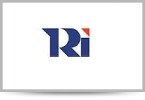Filter interviews by
LeeBoy India Interview Questions and Answers
Be the first one to contribute and help others!
Interview questions from similar companies

I was interviewed in Dec 2024.
Technical aptitude related to wiring, symbol identify, software related
(1 Question)
- Q1. EPLAN software macros type, Report generation, Black up, restore process, black box, structure box, Q2: Heat load calculation Q3: RFQ Full form process Q4: Switchgear selection Q5: MCB type, working.
(2 Questions)
- Q1. EPLAN software Version, AutoCAD software
- Q2. Work pressure handling capacity
Interview Preparation Tips

I was interviewed in Nov 2024.
(4 Questions)
- Q1. Wind calculation as per IS code
- Ans.
The procedure for wind calculation as per IS code involves determining the design wind speed, selecting the appropriate terrain category, and calculating the wind pressure.
Determine the design wind speed based on the location and height of the structure.
Select the appropriate terrain category (rural, urban, etc.) as per IS code guidelines.
Calculate the wind pressure using the formula provided in the IS code.
Consider fa...
- Q2. SFD and BMD of cantilever beam
- Q3. Staad model for fixed pole
- Ans.
A STAAD model for a fixed pole is a structural analysis and design model used to determine the stability and strength of a pole that is fixed in place.
In a STAAD model for a fixed pole, the pole is typically modeled as a vertical member with fixed supports at the base.
The model considers factors such as wind loads, dead loads, and any other relevant loads that may act on the pole.
The analysis helps in determining the s...
- Q4. Design of Square base plate
- Ans.
Key considerations in designing a square base plate
Ensure the base plate is large enough to support the load without excessive deflection
Select appropriate material and thickness to meet structural requirements
Consider the connection details for attaching the base plate to the structure
Account for any potential corrosion or environmental factors that may affect the base plate
Include provisions for anchor bolts or other...
Interview Preparation Tips

(5 Questions)
- Q1. What is your name
- Ans.
My name is John Smith.
Full name is John Smith
Common name in English-speaking countries
Easy to remember and pronounce
- Q2. How much experience you have
- Ans.
I have 2 years of experience working as a Junior Assistant in a busy office environment.
2 years of experience as a Junior Assistant
Proficient in office administration tasks
Skilled in using Microsoft Office suite
Excellent communication and organizational skills
- Q3. Which type of project you done
- Ans.
I have worked on various types of projects including data analysis, event planning, and marketing campaigns.
Data analysis project for a retail company to identify customer trends
Event planning project for a charity fundraiser event
Marketing campaign project for a new product launch
- Q4. Which type of machine you operate our know
- Ans.
I have experience operating various types of office equipment such as printers, scanners, and copiers.
Printers
Scanners
Copiers
- Q5. How to plan for production tomorrow
- Ans.
To plan for production tomorrow, it is important to assess current inventory, review upcoming orders, allocate resources, and communicate with team members.
Assess current inventory levels to determine what needs to be produced
Review upcoming orders to prioritize production schedule
Allocate resources such as materials, equipment, and manpower accordingly
Communicate with team members to ensure everyone is aware of their
(2 Questions)
- Q1. What is the least count of micrometer and caliper
- Ans.
The least count of a micrometer is 0.01 mm and the least count of a caliper is 0.02 mm.
Micrometer least count: 0.01 mm
Caliper least count: 0.02 mm
- Q2. What is conncetricity,total runout, flatness,rf and rt
- Ans.
Concentricity, total runout, flatness, rf, and rt are important measurements in engineering and manufacturing.
Concentricity refers to the tolerance of the center point of a feature relative to its axis.
Total runout measures the maximum amount a feature may vary from true circularity when rotated.
Flatness is the deviation of a surface from a perfect plane.
Rf (roughness factor) and Rt (roughness total) are measurements o...
Interview Preparation Tips

I applied via Referral and was interviewed in Dec 2024. There was 1 interview round.
(2 Questions)
- Q1. Witch type transformer use in elevator?
- Q2. Difference in open loop or close loop

Associate Trainee Interview Questions & Answers
Kyb Motorcycle Suspensionposted on 20 Jan 2025
I applied via Campus Placement and was interviewed in Dec 2024. There were 2 interview rounds.
(1 Question)
- Q1. Questions related to electronics and motors.
(1 Question)
- Q1. Self Intro Basic questions on electronics

Junior Engineer - mould Maintenance Interview Questions & Answers
Tokai Rubber Auto Parts Indiaposted on 28 Jul 2022
I applied via Recruitment Consulltant and was interviewed before Jul 2021. There was 1 interview round.
(3 Questions)
- Q1. Group discussion
- Q2. Hr round and discussion
- Q3. Technical round and injection moulding related any questions
Interview Preparation Tips
- Injection Moulding

Design Engineer Interview Questions & Answers
Crane Process Flow Technologies Indiaposted on 11 Jan 2025
(2 Questions)
- Q1. Questions related to core mechanical engg
- Q2. Product related questions

(3 Questions)
- Q1. Manufacturing department
- Q2. Manpower handle
- Q3. Daily target production
Interview Preparation Tips

(1 Question)
- Q1. How does a CNC machine works?
- Ans.
A CNC machine works by using computer programs to control the movement of the machine's tools and workpiece to create precision parts.
CNC machines use computer programs to control the movement of the cutting tools and workpiece.
The programs are created using CAD/CAM software and converted into G-code instructions.
The machine reads the G-code instructions and moves the tools along the specified paths to cut and shape th...

(3 Questions)
- Q1. Tell me my self
- Q2. Hr team asking and also depending on hr team
- Q3. This is Ajit hembade, I'm from nashik, My qualification b.com has been completed 2020
Interview Preparation Tips
Tell us how to improve this page.
Interview Questions for Popular Designations
- Analyst Interview Questions
- Design Engineer Interview Questions
- Software Engineer Interview Questions
- Software Developer Interview Questions
- Business Analyst Interview Questions
- Senior Engineer Interview Questions
- Graduate Engineer Trainee (Get) Interview Questions
- Test Engineer Interview Questions
- Show more
Interview Questions from Similar Companies
LeeBoy India Reviews and Ratings
based on 28 reviews
Rating in categories
|
Assistant Manager
7
salaries
| ₹4.8 L/yr - ₹7.1 L/yr |
|
Asst Store
5
salaries
| ₹1.6 L/yr - ₹3.6 L/yr |
|
Design Engineer
4
salaries
| ₹2.8 L/yr - ₹3.4 L/yr |
|
Service Engineer
4
salaries
| ₹3 L/yr - ₹6.8 L/yr |
|
Production Engineer
4
salaries
| ₹3.2 L/yr - ₹9.5 L/yr |

Escon Elevators

Europa Locks

Trelleborg

Case New-Holland Construction Equipment India
- Home >
- Interviews >
- LeeBoy India Interview Questions








